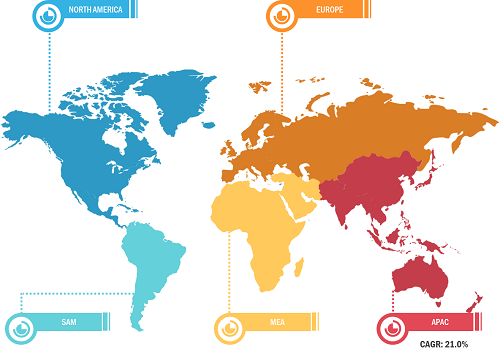The pressure vessel composite materials market size is expected to reach at US$ 3,224.09 million by 2028; registering at a CAGR of 20.3% from 2022 to 2028, according to a new research study conducted by The Insight Partners.
Increasing Demand for Natural Gas-Fuelled Vehicles
The report highlights key factors driving the pressure vessel composite materials market growth and prominent players along with their developments in the market.
A pressure vessel is a container designed to hold fluids (gases or liquid) at a pressure considerably different from ambient pressure. Pressure vessels are made using composite materials such as resins and fibers due to their high mechanical strength, lighter weight, high pressure containment, and extended service life. Pressure vessels used in natural gas-fueled vehicles, hydrogen vehicles, gas transportation vehicles are usually made using composite materials as they help in storing more fuel that extend the vehicle driving range and provide optimum fuel economy.
Natural gas-fueled vehicles use liquefied natural gas (LNG) or compressed natural gas (CNG) stored in a composite pressure vessel. These vehicles are equipped with a composite pressure vessel; therefore, the growth of the natural gas vehicle will drastically increase the market’s growth during the forecast period. Moreover, natural gas-fueled vehicles are good options for centrally fueled fleets, as they can provide an impressive fuel range support for applications that are not considered in long haul routes where fuel stations can become scarce. As a transportation fuel, natural gas benefits include extensive distribution infrastructure, domestic supply, and reduced greenhouse gas emissions over traditional gasoline and diesel fuels. According to the International Association for Natural Gas Vehicles (IANGV), by the end of 2021, 28.5 million natural gas vehicles were operational across the globe, whereas Asia Pacific had 20.47 million natural gas vehicles. High-pressure gas storage vessels represent one of the fastest growing and most significant markets for advanced composites, especially for filament wound carbon fiber composites. Therefore, the increasing demand for natural gas-fueled vehicles is expected to drive the pressure vessel composite materials market growth during the forecast period.
Global Pressure Vessel Composite Materials Market Breakdown – By Region
Pressure Vessel Composite Materials Market Forecast to 2028 - COVID-19 Impact and Global Analysis By Material (Resin, Fiber, and Others) and End User (CNG Vehicles, Hydrogen Vehicle, Gas Transport, and Others)
Pressure Vessel Composite Materials Market Strategies - 2028
Download Free Sample
A few players operating in the global pressure vessel composite materials market include 3M Co, BASF SE, Huntsman Corporation, Kolon Industries Inc, Mitsubishi Chemical Holdings Corp, Solvay SA, ZOLTEK Corp, Steelhead Composites Inc, Hexion Inc, and Olin Corp. Players operating in the pressure vessel composite materials market are focusing on providing high-quality products to fulfill customer demand. They are also focusing on strategies such as investments in research and development activities, and mergers & acquisitions.
Impact of COVID-19 Pandemic on Pressure Vessel Composite Materials Market
The COVID-19 pandemic significantly disrupted operations of various industries including the chemical & materials industry. Due to the imposition of lockdowns and trade restrictions by various governments, the manufacturing activities were significantly hampered. Supply chain disruptions and shortage of raw materials and labor caused decline in revenues of various leading and emerging companies in the chemicals & materials industry. The pressure vessel composite materials market also witnessed similar impacts of the outbreak. As there was a shutdown of manufacturing units, the production volumes dropped significantly. Moreover, the oil & gas industry was severely impacted by the pandemic due to reduced demand, which led to a decline in natural gas consumption. The sales of natural-gas-fueled vehicles dropped significantly during the pandemic, which eventually had a negative impact on the demand for pressure vessel composite materials. According to the International Energy Agency (IEA), in 2020, gas consumption dropped by 4% from the previous year. Moreover, the global demand for energy was less during the pandemic, which affected the demand for natural gas hampering the growth of the pressure vessel composite materials market. Furthermore, industries such as automotive, aerospace, and oil & gas were severely impacted during the pandemic, which also affected the demand for pressure vessel composite materials across the globe.
In 2021, the economies started reviving their operations, and various industries resumed their business activities. Hence, the transportation & logistics sector also witnessed a recovery in its operations, which bolstered the demand for pressure vessel composite materials.
The report includes the segmentation of the global pressure vessel composite materials market as follows:
The global pressure vessel composite materials market is segmented by material, end user, and geography. Based on material, the market is segmented into resin, fiber, and others. Based on end user, the market is segmented into CNG vehicles, hydrogen vehicles, gas transport, and others. By geography, the global pressure vessel composite materials market is broadly segmented into North America, Europe, Asia Pacific, the Middle East & Africa, and South & Central America.
Contact Us
Phone: +1-646-491-9876
Email Id: sales@theinsightpartners.com